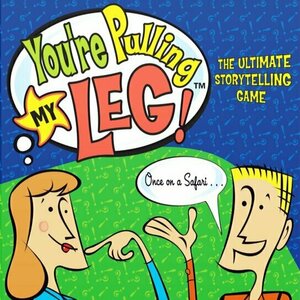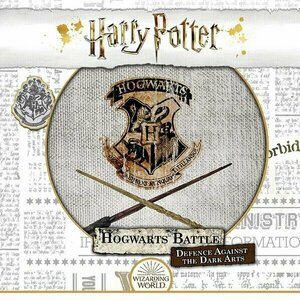The Red Journey: An Oral History of Liverpool Football Club
Book
Winning eighteen league championships, four European Cups, a Champions League title, seven FA Cups...

CloudBeats: Cloud Music Player
Music and Entertainment
App
Play your music anywhere directly from Google Drive, DropBox, Box, OneDrive, Amazon Cloud Drive,...
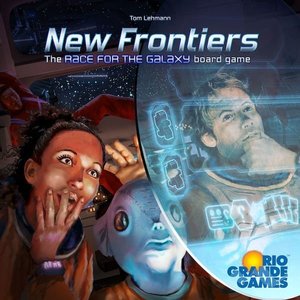
New Frontiers
Tabletop Game
In New Frontiers, a standalone game in the Race for the Galaxy family, players build galactic...
Race for The Galaxy
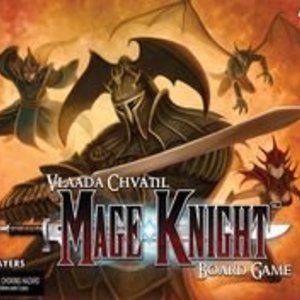
Mage Knight Board Game
Tabletop Game
The Mage Knight board game puts you in control of one of four powerful Mage Knights as you explore...
Boardgames RPGgames
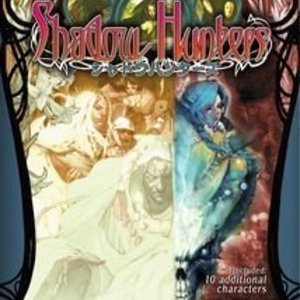
Shadow Hunters
Tabletop Game
Shadow Hunters is a survival board game set in a devil-filled forest in which three groups of...

Open Road - The best driving experience for Maps Navigation, Music, and Calling in the Car
Navigation
App
Open Road is the one driving app for your iPhone. One tap music, one tap navigation and one tap...
navigation
Purple Phoenix Games (2266 KP) rated You're Pulling My Leg! in Tabletop Games
Aug 3, 2020
Disclaimer: We were provided a copy of this book for the purposes of this preview. The pictures below show the final production copy you can expect to receive when ordering this game. Check out the publisher’s website to get your hands on this unique party game! -L
You’re Pulling My Leg! is a party game of bluffing and storytelling in which players are trying to be the first to earn 21 points. The rules are simple, the gameplay is straightforward, and it can even be played remotely!
To setup the game, every player needs a coin and a way to keep track of their score (paper/pencil, notes on a phone, etc.). Every player begins the game with 7 points. To start the game, choose a player to be the first Storyteller. The Storyteller selects a card from the book, reads the three questions on their chosen card, and chooses 1 to answer. The Storyteller then flips their coin – if HEADS, the answer must be a true story, but if TAILS, the answer must be false and untrue in essence. Only the Storyteller knows the result of the coin flip. The Storyteller proceeds to answer the question, telling a story dictated by their coin flip result.
After the Storyteller has told their response to the chosen question, the remaining players will vote (with points) on whether they believe the story was true or false. Players can vote with up to 3 points, and votes are revealed simultaneously. If you believe the story is TRUE, you vote with 1, 2, or 3 fingers pointing UP, and if you believe the story is FALSE, you vote with 1, 2, or 3 fingers pointing DOWN. After everyone has voted, the Storyteller reveals whether the story was true or false, and points are added/deducted accordingly. If a player voted correctly, they add the number of points with which they voted to their score. If they voted incorrectly, subtract the voted points from their score. The Storyteller can earn 1 point for each other player they have fooled, up to a maximum of 3 points per story. After tallying points, choose a new Storyteller and begin again – each player should have a chance to be the Storyteller once before repeating Storytellers. Play continues in this fashion until one player has scored 21 points, and is declared the winner!
At this point in my life, the thing I love about You’re Pulling My Leg! the most is that it can be played remotely. Everybody does not need to have an individual copy of the book to play via video chat or conference call. As long as one person has the book, your group can play! Instead of having each player read their own cards then, the owner of the book reads the cards aloud and the Storyteller chooses their question that way. The only supplies needed, apart from 1 copy of the book, are a coin and a way to track your score. Easy as pie. Another aspect of this game that I really enjoy is that it is pretty light-hearted in nature. Yes, there is an element of deception and bluffing, but it is all done in a light and quirky way. I especially enjoy this because I am a notoriously bad liar, and most bluffing games stress me out. But the ability to choose my question, and then weave a (hopefully) convincing story for my opponents takes some of that pressure off and allows me to really be creative and have fun.
That being said, one tricky thing about this game is that when coming up with a false story, if must be false in essence. You cannot tell a mostly true story with a few trivial details changed. People who have trouble with storytelling or improv-type scenarios might have some difficulty in coming up with an appropriate story for the different questions. Just something to be aware of – you have to be able to come up with a story on the fly, with no hints or help whatsoever. Another tricky, yet usually fun, aspect of this game is that some cards have a Wild feature which can immediately affect someone’s score. For example, one Wild feature might say “Player with the longest hair gains 3 points.” That goes into effect immediately once the card is selected, and can put a fun twist and some good-natured take-that into this storytelling game. The process of voting with points adds an element of strategy as well. How confident are you that someone’s story is TRUE? Are you willing to bet 3 points on it? It’s a balance of risk and reward, and that adds excitement to the game table.
Let me touch on components for a minute. This game is a book, where each page contains 3 cards. You can start at card #1 or select a random page and pick a card there, but there are 225 cards from which to choose! On every other page there is also a blank page titled “Game Highlights,” and this space is for you to write down any particularly hilarious or creative responses someone may have come up with in response to a card. It’s not a game requirement, but just an element of fun for future reminiscence. The quality of the book is pretty good, and I know it is sturdy enough to withstand lots of travel and play.
So all-in-all, I think that You’re Pulling My Leg is a great and light little game to get your creative juices flowing. If you need an ice-breaker for a game night, this would definitely be a great one to get to know your gaming comrades. Is it a game I will pull out at every game night? No. But it is a fun and light-hearted game that I can see myself pulling out with different gaming groups on several occasions. Whether a family reunion, office party, or friend Zoom call, this game is one that will entertain all involved. If you’re looking for something unique, fun, and relatively simple overall, give You’re Pulling My Leg! a shot. It might just open the door to storytelling based games for you!
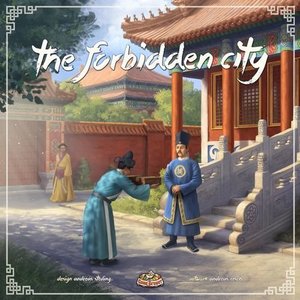
The Forbidden City
Tabletop Game
China, 1570. China is under the reign of the Longqing Emperor, of the Ming Dynasty. He inherited a...
Boardgames 2018Games
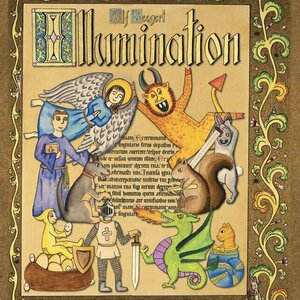
Illumination
Tabletop Game
Illumination is a game of Mad Medieval Monks and Illuminated Manuscripts. You and your opponent...
Like I just mentioned, Defence pits two players against each other in a sparring scenario. Players will be drafting cards that represent Spells to sling, Allies to aid, and Items to help knock opponents off their balance. The winner of Defence is the wizard who can stun their opponent three times. Only then will they be able to stand a chance against their dark foes.
DISCLAIMER: We were provided a copy of this game for the purposes of this review. This is a retail copy of the game, so what you see in these photos is exactly what would be received in your box. I do not intend to cover every single rule included in the rulebook, but will describe the overall game flow and major rule set so that our readers may get a sense of how the game plays. For more in depth rules, you may purchase a copy online or from your FLGS. -T
To setup a game, follow the rulebook instructions to lay out the main duel board and its shuffled decks that will surround it. These include the Hogwarts deck (from which players will be purchasing cards to add to their discard piles), the Library deck (which includes only Books cards that add influence or the ability to draw the top card of the player deck), Hexes (which are placed directly in the opponent’s discard pile and must be dealt with first when in hand), and Banished cards. Each player will choose a House card and a matching mover token to be placed on the board. Likewise, each player will have a starting hand of seven Alohomora! cards, one Wand, one Cauldron, and one starter Ally: Owl, Toad, or Cat. Each player will shuffle their starting deck, drawing five for their starting hand. Determine the starting player and the duel may begin!
On a player’s turn they will first deal with any Hex cards they have acquired, following the instructions written on the card. Once cleared, the active player will play cards from their hand in any order they wish to gain Influence to purchase cards from the Classroom (market), Attack points to push back their opponent towards the Stun space, or Health points to move their own mover token one space closer to the Starting space on the board.
Cards that are purchased from the Classroom can be Items, Spells, or even Allies. Items and Spells typically provide Influence, Health, or Attack, and some will have House bonuses in addition to normal effects. In order to take advantage of the House bonus, a player will either need to be from the affiliated House, or have an active Ally belonging to the affiliated House. This is a new mechanic in this game and adds another layer of strategy to a player’s purchasing.
As wizards duel back and forth slinging Spells, recruiting and activating Allies, and using Items to push back their opponent, one wizard will be stunned. When this happens the players will reset their play areas by combining all of their cards they have in their possession. Shuffle the lot of them, draw another hand of five cards and reset their mover token back to the Starting space. The next round is ready to begin and the wizard who stuns their opponent thrice will be crowned champion! Or get an A for the day… or whatever the Common Core equivalent is nowadays.
Components. I have many great things to say about the components in this box and a couple little gripes. Gripelets, really. First gripe: the box comes with a cardstock sleeve. It is very cool and looks great, but it’s unnecessary and I find it keeps snagging on other boxes and such. Not a big deal, as I can always get rid of it, but that’s an opinion. Second, the board is very dark. It features a very dark purple (yay purple!) with black spaces upon which players move their tokens. The colors are very close under certain lighting and I wish there was even just a faint outline of the spaces in a white or gray. Lastly, and probably just me and the way I play, the Attack and Health trackers are almost completely unnecessary. I know you are supposed to take a token every time you “Gain” a Health or Attack point, but I always just keep track in my head thus negating the need for the tokens.
But onto the great. Literally everything else is great. I have always enjoyed the components in the original game, and as this one contains many of the same, I also enjoy these. The art style is interesting and pretty cool, and I really don’t mind screencaps as much as many others do. So for me, overall, I really enjoy the components here.
All in all I truly love this game. I am almost always in the mood to play Harry Potter: Hogwarts Battle, but it is cooperative and my wife doesn’t really enjoy the OG HP game. This one, however, she does enjoy because she can just flex on me and stun me into oblivion with her superior deckbuilding abilities. This one is quicker to setup and play, and holds a much smaller footprint. The mechanics are familiar without being totally duplicating, and I just love deckbuilders in general. So this one was bound to be a big hit with me from the start.
If you are looking for a great Harry Potter-themed deckbuilding game and are not completely sold on the bigger cooperative game, take a look at this much smaller two-player competitive title. Do try to take some of the cards with a grain of salt, as I am sure it is difficult to imagine having both Hermione and Draco as allies simultaneously, but it can happen in the game. Purple Phoenix Games gives this one a very enthusiastic 11 / 12. Just a word of caution, try not to Flipendo your table when you lose. It won’t end well.

